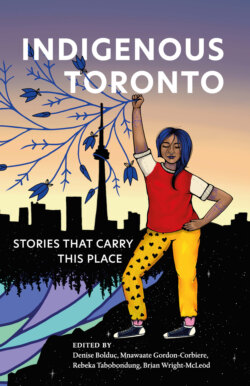Читать книгу Indigenous Toronto - Группа авторов - Страница 18
На сайте Литреса книга снята с продажи.
ELDERS AND ADULTS
ОглавлениеWhile the population profile of this community is more accurate than most because of the way the ossuary was excavated, one observation is at odds with previous investigations – there were just more aged elders.
Patterns of tooth wear, decay and loss, and jaws with less bone supporting teeth were common. There was evidence of deteriorative diseases among the adults, including at least one case of probable cancer, a form associated normally with post-reproductive age.
Among adults more generally, respiratory infections were common, resulting from life in smoke-filled longhouses, as well as dental decay because of a corn-dominated diet. In ossuaries a century or two later, these conditions were even worse because of increased crowding in villages and exposure to new pathogens from more distant Indigenous communities. The higher proportion of old adults at Moatfield is perhaps a result of better living conditions compared to their descendants.
The climate of Southern Ontario necessitated people spending the winter months indoors, where smoky air from wood fires, with age, irritated their facial sinuses. Sixty per cent of adults showed chronic sinusitis. Four showed changes to bones of the spine consistent with long-standing tuberculosis. Since modern clinical evidence indicates that bone is rarely involved in this disease, four cases means there was a relatively high proportion of infected people. Three adults showed lesions to the inner surfaces of the ribs, which is seen accompanying pulmonary tuberculosis, although these also occur with pneumonia or a collapsed lung.
There were also various infected wounds, including a dramatically altered femur (upper leg bone) that had been placed near the centre and top of the ossuary. The individual likely had a systemic infection throughout their body, but it did not result in their death, as the femur was completely remodelled. Similar inflammatory responses in two tibiae (larger lower leg bones) and a fused left foot could all be linked. A chronic infection of a bacterium like staphylococcus would be typical after a serious trauma to a leg.
On the other hand, there were relatively few healed fractures. With the exception of one healed femoral fracture, the breaks were not very debilitating (ribs, fingers, toes), indicating the ancestors suffered only from occasional accidents.
The larger proportion of elders in the community ossuary than seen in subsequent Huron-Wendat villages is also consistent with the absence of interpersonal violence. Political instability, crowding, and feuding, which can have strong negative effects on life expectancy, were also perhaps absent. Two sawed halves of a human cranium found together in the village, however, were being fashioned into a rattle; dozens of such artifacts – ground on their edges, polished, and featuring a series of drilled holes for fastening the two halves together – have been found on Iroquoian sites throughout Southern Ontario and are thought to have been made from the skulls of prisoners of war.
